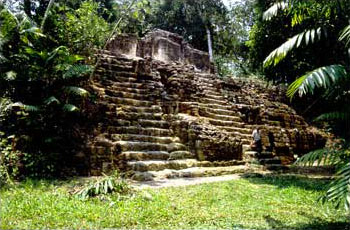| FAMSI © 2005: Carlos Rudy Larios Villalta |
||
Architectural Restoration Criteria in the Maya Area
Research Year: 2000 Table of Contents
Introduction The architectural restoration of the Maya area is not a frequently discussed issue, and consequently not too much known for the general public. Nevertheless, it has an obvious significance, as restoration is responsible for the ruins transformation of numerous archaeological monuments into outstanding tourist attractions as well as development centers for the nearby communities and companies involved in tourism. Presently, countries in Mesoamerica are requesting that archaeological projects, in addition to studying the prehispanic cultures past, include at least partial restoration works as a part of their programs. Unfortunately, these works are not being accomplished by experts in this field, and much too often archaeologists, all by themselves, must take full responsibility. Moreover, there are no official guidelines or criteria so far on which to base our actions. This work, completed thanks to the assistance and support provided by FAMSI, will attempt to fill in the gap by discussing a number of primary conservation criteria and by defining, as much as we can, major theoretical and conceptual foundations to make them available to all those who for different circumstances may find themselves engaged in these activities. Consequently, we hope to be of help in establishing a theoretical framework to justify the methodology of reconstruction involving archaeology as a base of conservation. In other words, it is not our intention to make archaeologists become restorers, but rather to spread the awareness of the urge to coordinate all archaeological actions with those of monumental conservation, in the understanding that they are complementary and by no means competitive activities, and that one is no less important than the other. Click to download the report in PDF format: Architectural Restoration Criteria in the Maya Area (4.55 MB) The PDF files require Adobe Acrobat Reader.
Submitted 02/12/2001 by: |
||
| Return to top of page | ||
|
Text links to all pages at this site are available at the FAMSI INDEX |
||

